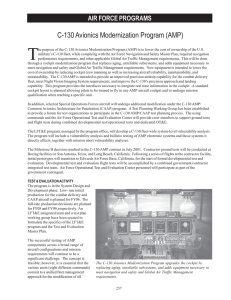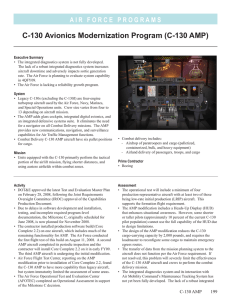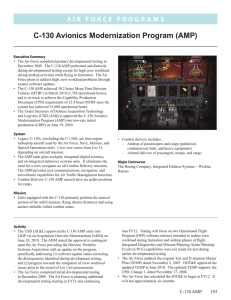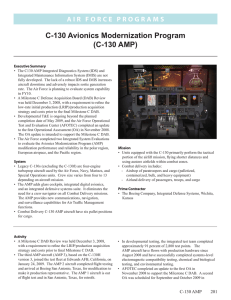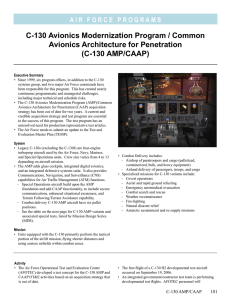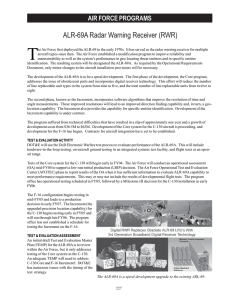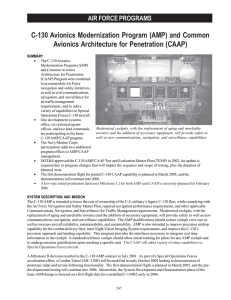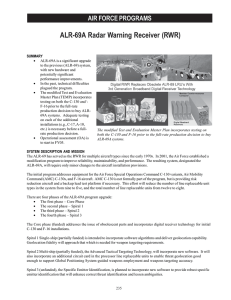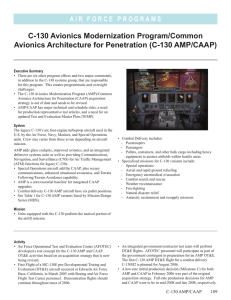C-130 Avionics Modernization Program (C-130 AMP)
advertisement
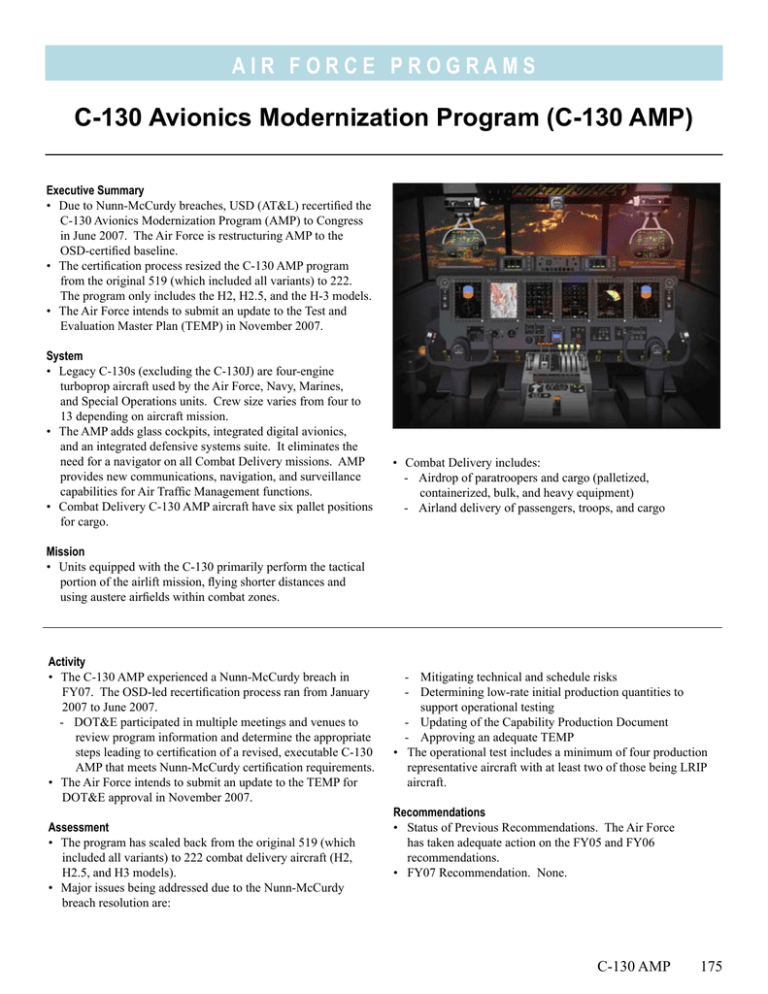
A i r F o r c e P RO G R A M S C-130 Avionics Modernization Program (C-130 AMP) Executive Summary • Due to Nunn-McCurdy breaches, USD (AT&L) recertified the C-130 Avionics Modernization Program (AMP) to Congress in June 2007. The Air Force is restructuring AMP to the OSD-certified baseline. • The certification process resized the C-130 AMP program from the original 519 (which included all variants) to 222. The program only includes the H2, H2.5, and the H-3 models. • The Air Force intends to submit an update to the Test and Evaluation Master Plan (TEMP) in November 2007. System • Legacy C-130s (excluding the C-130J) are four-engine turboprop aircraft used by the Air Force, Navy, Marines, and Special Operations units. Crew size varies from four to 13 depending on aircraft mission. • The AMP adds glass cockpits, integrated digital avionics, and an integrated defensive systems suite. It eliminates the need for a navigator on all Combat Delivery missions. AMP provides new communications, navigation, and surveillance capabilities for Air Traffic Management functions. • Combat Delivery C-130 AMP aircraft have six pallet positions for cargo. • Combat Delivery includes: - Airdrop of paratroopers and cargo (palletized, containerized, bulk, and heavy equipment) - Airland delivery of passengers, troops, and cargo ­ Mission • Units equipped with the C-130 primarily perform the tactical portion of the airlift mission, flying shorter distances and using austere airfields within combat zones. Activity • The C-130 AMP experienced a Nunn-McCurdy breach in FY07. The OSD-led recertification process ran from January 2007 to June 2007. - DOT&E participated in multiple meetings and venues to review program information and determine the appropriate steps leading to certification of a revised, executable C-130 AMP that meets Nunn-McCurdy certification requirements. • The Air Force intends to submit an update to the TEMP for DOT&E approval in November 2007. Assessment • The program has scaled back from the original 519 (which included all variants) to 222 combat delivery aircraft (H2, H2.5, and H3 models). • Major issues being addressed due to the Nunn-McCurdy breach resolution are: - Mitigating technical and schedule risks - Determining low-rate initial production quantities to support operational testing - Updating of the Capability Production Document - Approving an adequate TEMP • The operational test includes a minimum of four production representative aircraft with at least two of those being LRIP aircraft. Recommendations • Status of Previous Recommendations. The Air Force has taken adequate action on the FY05 and FY06 recommendations. • FY07 Recommendation. None. C-130 AMP 175 A i r F o r c e P RO G R A M S 176
